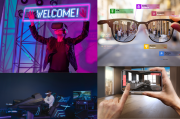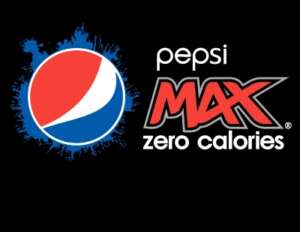The world of marketing and advertising is constantly evolving, and with the rise of technology, the possibilities are endless. Augmented reality (AR) and virtual reality (VR) have been around for a while, but they are now becoming more prevalent in advertising and sales. This is because AR and VR offer unique experiences that can engage and excite consumers in ways that traditional advertising cannot. In this article, we will explore the impact of AR and VR on sales and advertising, the benefits of using these technologies, and examples of successful campaigns.
Understanding the Difference between Augmented and Virtual Reality


AR and VR are often used interchangeably but are two different technologies. AR overlays computer-generated images on top of the natural world, while VR creates an entirely new digital environment. AR is often used in marketing and sales to provide consumers with additional information about a product or service. For example, a furniture company might use AR to show customers how a piece of furniture would look in their home. VR, on the other hand, is often used to create immersive experiences. For example, a car company might use VR to allow customers to take a virtual test drive of a new car.
Benefits of Using AR and VR in Advertising and Sales
The use of Augmented Reality (AR) and Virtual Reality (VR) in advertising and sales offers several benefits, including:
1. Enhanced Customer Experience: AR and VR can provide customers a highly engaging and interactive experience. By enabling customers to visualize and interact with products in a virtual environment, they can better understand the product’s features and benefits.
2. Increased Sales: By offering customers a more immersive experience, AR and VR can help to increase sales. Customers are more likely to purchase if they can see and experience the product more precisely and engagingly.
3. Improved Brand Awareness: AR and VR can create unique and memorable brand experiences. By offering customers an immersive and interactive experience, brands can leave a lasting impression and increase brand awareness.
4. Cost-Effective: AR and VR can be cost-effective solutions for advertising and sales. Using virtual environments, brands can save money on physical product displays, advertising materials, and event production costs.
5. Data Collection: AR and VR can provide valuable data insights for advertisers and sales teams. By tracking customer interactions and behaviours in virtual environments, brands can gain insights into customer preferences and improve marketing strategies.
Overall, AR and VR offer a range of benefits for advertising and sales. By providing customers an immersive and interactive experience, brands can increase sales, improve brand awareness, and gain valuable data insights.
Examples of Successful AR and VR Campaigns


1. IKEA Place App – IKEA’s AR app allows users to place virtual furniture using their smartphone camera in real-world environments. The app has been downloaded over 2.5 million times and has greatly enhanced the customer shopping experience.


2. The North Face – The North Face used VR technology to create an immersive experience for customers, allowing them to explore Yosemite National Park virtually. The campaign was a huge success and increased sales by 7.2%.


3. National Geographic – National Geographic used VR technology to take viewers on a virtual reality tour of Mars, creating an engaging and immersive experience for viewers.


4. Pepsi MAX – Pepsi MAX used an augmented reality campaign to create a unique user interactive experience. The campaign used AR to create a virtual reality soccer game, which allowed users to compete against each other in a virtual environment.


5. Jaguar Land Rover – Jaguar Land Rover used VR to allow potential customers to test drive their latest vehicles before release. This campaign allowed customers to experience the cars before they were available, which helped to build excitement and generate buzz.
6. L’Oréal Makeup Genius – L’Oréal’s AR app allows users to try on different makeup looks using their smartphone camera. The app has been an enormous success and has been downloaded over 10 million times.


7. Coca-Cola – Coca-Cola used AR technology to create a virtual reality vending machine, which allowed users to interact with the brand uniquely and engagingly. The campaign was a massive success and helped to increase sales.
![]()
![]()
8. The New York Times – they have used VR technology to create an immersive experience for viewers, allowing them to experience stories in a new and engaging way. The campaign was a massive success and helped to increase engagement and subscriptions.’
9. Nike’s Air Max Japan – The Nike Air Max Day wowed us with its 3D billboard exhibition in Japan outside Tokyo’s busiest station, Shinjuku. This successful OOH campaign, targeting specific demographics and locations, featured an oversized Nike orange box that opened to reveal running shoes and captivating graphics. With transitions between fantastic shoe designs and the beloved Shinjuku cat, Nike’s sales and global audience grew tremendously. The campaign was the result of a partnership between Nike Tokyo’s in-house brand Creative Studio and creative collective CEKAI, directed by Kota Iguchi. Although the team faced challenges, they overcame them to create an unforgettable experience in late 2021.
Augmented Reality Marketing Techniques
Many different techniques can be used in AR marketing. One method is to use AR to provide customers with additional information about a product or service. For example, a makeup company might use AR to allow customers to try on different shades of lipstick virtually. Another technique is to use AR to create interactive experiences. For example, a theme park might use AR to create a scavenger hunt for visitors.
Virtual Reality Advertising Techniques
Many different techniques can be used in VR advertising. One method is to use VR to create immersive experiences. For example, a hotel might use VR to allow customers to virtual tour their facilities. Another technique is to use VR to make emotional connections with consumers. For example, a charity might use VR to allow donors to see firsthand the impact of their donations.
Augmented Reality Sales Strategies
Many different strategies can be used in AR sales. One method is to use AR to allow customers to see how a product would look in their home or office. For example, a furniture company might use AR to tell customers how a piece of furniture would look in their living room. Another strategy is to use AR to provide customers with additional information about a product. For example, a car company might use AR to show customers the different features of a new car.
Virtual Reality in Digital Marketing
VR can be used in many different areas of digital marketing. One area is social media marketing. For example, a company might use VR to create a virtual reality ad that users can interact with on social media. Another area is email marketing. For example, a company might use VR to create a virtual reality newsletter that subscribers can interact with.
Future of AR and VR in Marketing and Sales
Augmented Reality (AR) and Virtual Reality (VR) can revolutionize how companies market and sell their products. Various industries already use these technologies to enhance customer experience, improve engagement, and increase sales. Here are some ways that AR and VR could impact marketing and sales in the future:
1. Enhanced Product Visualization: AR and VR can provide customers with an immersive experience that allows them to visualize products in their environment. This can help customers make more informed purchasing decisions and reduce the likelihood of returns. For example, a furniture company could use AR to show customers how a couch would look in their living room.
2. Interactive Product Demos: AR and VR can create interactive product demos that allow customers to experience the product before purchasing. This can be particularly useful for products that are difficult to demonstrate in-store, such as a car or heavy machinery.
3. Virtual Retail Spaces: AR and VR can create virtual retail spaces that allow customers to browse products and make purchases from anywhere in the world. This can be particularly useful for companies with a limited physical presence or wanting to expand their reach to international markets.
4. Gamification: AR and VR can create gamified experiences that engage customers and encourage them to purchase. For example, a sports retailer could use AR to create an interactive game allowing customers to test sports equipment before buying.
5. Personalization: AR and VR can create personalized experiences tailored to individual customers. This can be particularly useful for companies that sell customized products or want to provide a more customized shopping experience.
In conclusion, AR and VR can potentially transform how companies market and sell their products. As these technologies evolve, we expect to see more innovative uses of AR and VR in marketing and sales.
Challenges and Limitations of AR and VR in Advertising
Augmented Reality (AR) and Virtual Reality (VR) are becoming increasingly popular in advertising due to their ability to create immersive experiences that engage and captivate audiences. However, there are still some challenges and limitations that need to be considered when using AR and VR in advertising:
1. Limited Audience Reach: Although the use of AR and VR is growing, many people still do not have access to the necessary hardware to experience it. This means that the audience for AR and VR advertising is still relatively small compared to other forms of advertising.
2. High Development Costs: Creating high-quality AR and VR experiences can be costly, especially if the experience requires custom development or complex programming. This can be a barrier for smaller businesses with limited budgets.
3. Technical Issues: AR and VR experiences rely heavily on technology, which can sometimes fail or be unreliable. Technical issues can lead to a negative user experience, which can be detrimental to the effectiveness of the advertising campaign.
4. Lack of Standardization: There are currently no established AR and VR advertising standards, meaning there is no clear set of guidelines for advertisers to follow. This lack of standardization can make it difficult for advertisers to create effective campaigns.
5. User Privacy Concerns: AR and VR experiences often require users to share personal data, such as location or biometric data, which can be a concern for privacy-conscious users.
Overall, AR and VR have the potential to revolutionize advertising by creating immersive experiences that engage audiences in new and exciting ways. However, advertisers must also consider the challenges and limitations of these technologies to ensure they are using them effectively and responsibly.
Conclusion
In conclusion, AR and VR are two technologies changing how marketers and salespeople approach their work. These technologies offer unique experiences that can engage and excite consumers in ways that traditional advertising cannot. While there are challenges and limitations to using these technologies, the benefits are clear. As technology advances, we can expect more innovative AR and VR uses in marketing and sales.
To fulfill your digital marketing needs, check out Markitome for all your marketing and advertising needs!



We hope you’re enjoying reading our blogs… Don’t forget to secure your browsing experience with Nord VPN. Click the banner below to learn more
More To Explore
Redefining Digital Marketing in 2024: 10 Game-Changing Trends
In the ever-evolving world of digital marketing, staying ahead of the curve is essential. As we approach 2024, it’s crucial to be aware of the
SEO Mania-7 Proven Strategies for Explosive SEO Growth in 2024
Understanding the Importance of SEO in 2024 In the ever-evolving world of SEO, staying ahead of the curve is crucial to your online success. As